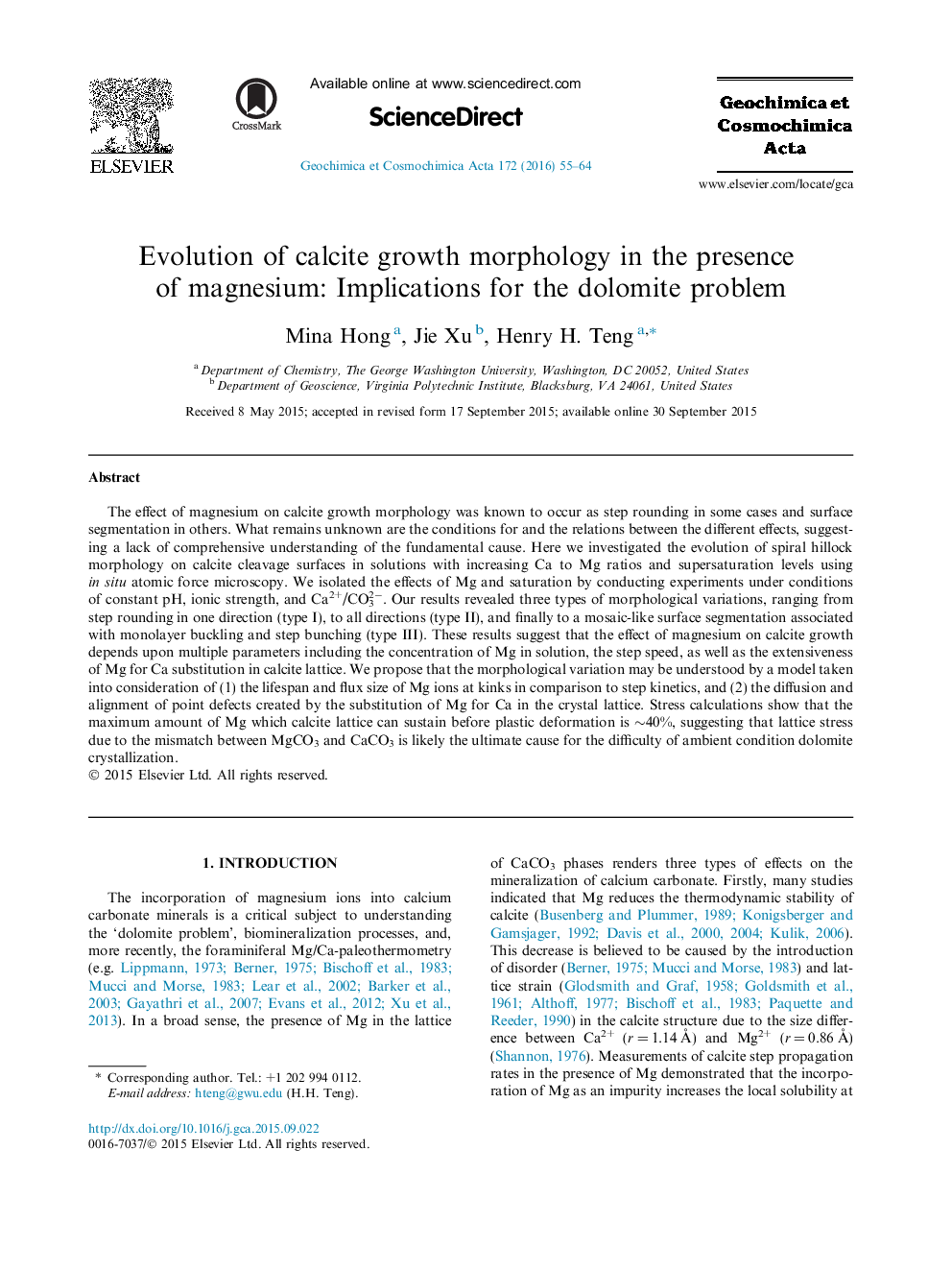| Article ID | Journal | Published Year | Pages | File Type |
|---|---|---|---|---|
| 6437683 | Geochimica et Cosmochimica Acta | 2016 | 10 Pages |
Abstract
The effect of magnesium on calcite growth morphology was known to occur as step rounding in some cases and surface segmentation in others. What remains unknown are the conditions for and the relations between the different effects, suggesting a lack of comprehensive understanding of the fundamental cause. Here we investigated the evolution of spiral hillock morphology on calcite cleavage surfaces in solutions with increasing Ca to Mg ratios and supersaturation levels using in situ atomic force microscopy. We isolated the effects of Mg and saturation by conducting experiments under conditions of constant pH, ionic strength, and Ca2+/CO32â. Our results revealed three types of morphological variations, ranging from step rounding in one direction (type I), to all directions (type II), and finally to a mosaic-like surface segmentation associated with monolayer buckling and step bunching (type III). These results suggest that the effect of magnesium on calcite growth depends upon multiple parameters including the concentration of Mg in solution, the step speed, as well as the extensiveness of Mg for Ca substitution in calcite lattice. We propose that the morphological variation may be understood by a model taken into consideration of (1) the lifespan and flux size of Mg ions at kinks in comparison to step kinetics, and (2) the diffusion and alignment of point defects created by the substitution of Mg for Ca in the crystal lattice. Stress calculations show that the maximum amount of Mg which calcite lattice can sustain before plastic deformation is â¼40%, suggesting that lattice stress due to the mismatch between MgCO3 and CaCO3 is likely the ultimate cause for the difficulty of ambient condition dolomite crystallization.
Related Topics
Physical Sciences and Engineering
Earth and Planetary Sciences
Geochemistry and Petrology
Authors
Mina Hong, Jie Xu, Henry H. Teng,
